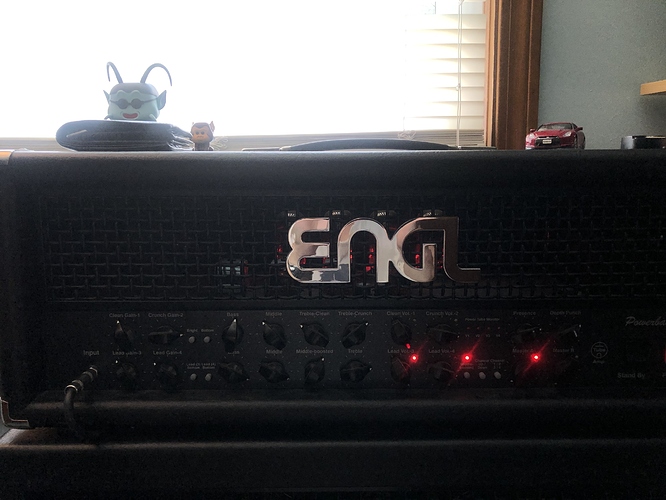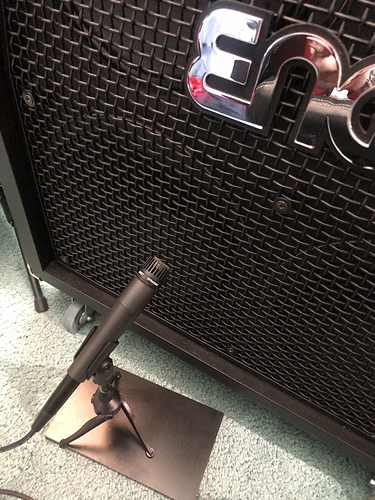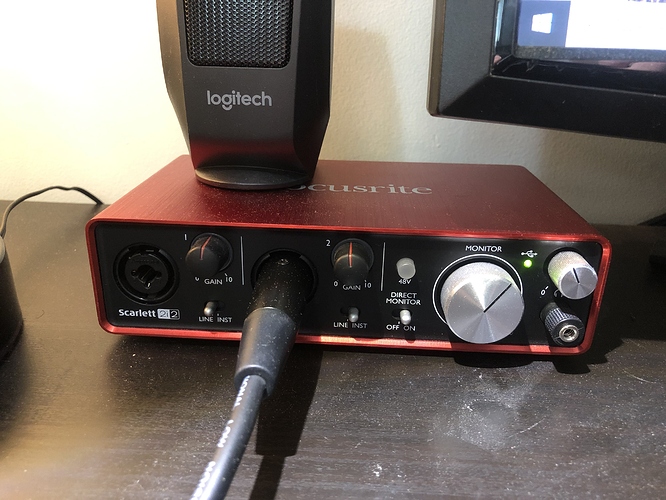Thanks Tommo 
OP, what you want to do may seem complicated but it really isn’t.
First things first, I’m not much of a believer in “cutting through the mix” as I am in “sitting in the mix.” A semantic difference perhaps, but it has very real implications in sound later down the chain. I dislike the surgical approach of making instruments overly stand out via exaggerrated EQ, either to achieve this purpose, or to reverse a badly EQ’d instrument to make the track sound cohesive.
In fact, even in guitar-dominated technical music I go for ensemble and cohension between all the instruments. In the worst case scenario it has the added benefit of masking any mistakes  . A lot of my fav albums were done this way so I may be biased.
. A lot of my fav albums were done this way so I may be biased.
As a result of this I believe in committing to tape. Get the best sound you can wring out of the instrument, and leave the rest up to your own ears or a separate trusted pair of ears to specialize in the post-recording process. You only need to do what you do best.
Don’t give the mixing engineer (be it you, or someone else) a sub-par version of your sound because of what you may believe a good eq’d track is. Often times thinning it down later works better than trying to fatten things up with noisy compression in the end. Start with full bandwith and all that.
Get a good big sound first. Play through it. Record with it. Get used to the sound before the whole EQ/compression business. Fundamentals are important. Don’t worry about the mix when you’re just trying to play and get your sound. And when it does come down to mixdown-
-Mixing is not just about eq as it is about proximity and space. Using this concept allows one to even make room for fat guitars. Then it allows to mesh with bass and kick drums better, leading to cohesion rather than a thinner sounding surgical approach.
And on that note, the loss in self confidence from the daw-dominated approach is really down to proximity effect more than anything. Even in an amp- reactive load- daw setup, what you get is a sound akin to pressing you ear against the speaker, without the added benefit of volume. That is unflattering for anyone. Listen to EJ or YJM live post-90s with the changing FOH soundscape. Even those guys have trouble with proximity/early reflections all the same.
The problem is exacerbated in a headphone setup all the more.
A quick and effective fix is to add a 40-50% mix stereo room reverb to get that cab in a room sound which is how a guitar should sound anyway. It is analogous to listening to a great vocalist; you are hearing just as much space as you are the original source. Without that and to hear just your ear pressed against the singer’s mouth is a little disappointing, even for the very best.
Thus even with a mic in front of the amp, the goal should be to mic the amp and not just the speaker. This is one reason why I still prefer actual mics which allows me to blend close and room mics so I keep the clutter down to a minimum, but a stereo reverb (in any daw) is extremely effective in this process. Key is early reflections and diffusion.
I use my amps, suhr RL, torpedo WoS stereo IRs, and use apple logic x for the stereo reverb. I like the tone and flexibility this setup provides and it’s for me, the next best thing to stereo micing loud amps (of course, I am still able to crank the amps this way).
The downside of this is that should your daw not have this plug-in, it becomes very difficult to find in pedal format, if convenience is the goal and utmost priority. The only exception is the boss rv-5 which I believe has roland sde-2000/3000 algorithms that allow for this neat stereo widening phasing trick. There are of course strymon stuff which are great at this aspect as well, but bigger than true stompbox formats I’d say. The most cumbersome, but all the more exciting are old lexicon gear, which can do this stuff on a dime. The point is that a reverb pedal in front of the amp won’t really do it, so the idea is to rely on post-fx for your goal.
Hope this helps.







